November 27, 2018
In my article “F*@# Diets – Customized, Delicious Nutrition Made Easy“, you learned how to customize your diet. However, that article focused more on testing, tweaking and customizing your diet, and less on cutting through the clutter and confusion generated by the myriad of diet books on the market.
After all, I get it: you want some type of done-for-you guide that simply tells you what to eat for breakfast, lunch, dinner and snacks. Fact is, since every human being is biologically unique, there is no “one-size-fits-all” guide. However, after reading over the past two decades literally hundreds of diet and nutrition books, and working with clients from pro athletes, to CEOs, to very sick individuals, to the average Joe and Jill, I can tell you with confidence there are less than a dozen books and diets that I actually endorse/agree with and that are intelligently written without excessive bias – and these are the same type of books and diets that I recommend to folks when I help them to review their health history, goals and labs, they desire a done-for-you plan, and they may not be able to afford, say, a customized meal plan written by me.
So below, I'm giving you the best of the best: the basic to advanced diets that I've found to work time and time again for a variety of issues, including fixing the gut, losing fat, gaining muscle and enhancing performance. This list is not 100% exhaustive, but nine times out of ten, I'm putting my clients on a diet I've selected from the list below, then doing slight customizations and tweaks based on individual needs.
The Basic Dietary Best Practices
Let's begin with the basics: practices that are seen time and time again in Blue Zone hotspots of longevity and also in the healthiest populations worldwide. No matter which diet you follow, you should include the following strategies:
-Incorporate regular intermittent fasts or longer fasting periods.
-Be ruthlessly cognizant of inflammatory foods and control of glycemic variability.
-Occasionally re-feed the body with adequate calories and carbohydrates.
-Occasionally engage in periods of more intense detoxification.
-Whenever given the option between real food and packaged/processed food, choose the former.
-Eat a very wide variety of multi-colored plants, herbs and spices.
-Whenever possible, choose clean, organic, wild, non-GMO or otherwise healthy foods and ingredients.
-Whenever possible, eat locally grown foods that are available on a seasonal basis.
-Review the longevity tips in my article “12 Basic, Natural & Easy Habits To Enhance Longevity” and incorporate those principles into your diet as frequently as possible.
Make sense?
OK, now let's dive into the nitty-gritty.
4 Beginner Meal Plans To Reboot The Body
The meals in this beginner section are designed to give you an extremely clean eating protocol fashioned to reboot and reset your entire body, especially the gut. I recommend that unless you are in pristine health, you follow any of the meal plans in this section for a minimum of 4-8 weeks prior to progressing to an intermediate plan. If you have gut issues, inflammation, autoimmune symptoms, etc. you should plan on sticking to this type of diet until symptoms subside, which can take 3-6 months (I'm not a doctor, so please don't misconstrue this as medical advice).
Depending on taste, desire for variety and your unique food preferences, you can mix and match any of the programs in this section. Rather than simply recommending one single diet – which I've already mentioned and you know from this article is a flawed approach – I’m instead equipping you with a variety of diets that you can use to heal your gut, ease digestion, detox the body and prepare your digestive system for more complex eating patterns after you’ve cleaned things up.
Beginner Option #1: The Autoimmune Paleo Diet
One of the best ways to clean up your diet is to follow an Autoimmune Paleo Diet (AIP). Also known as the paleo autoimmune protocol, the AIP diet is a much stricter version of the Paleo diet (which is based on meat, fish, vegetables, nuts and seeds). It eliminates foods such as dairy, grains, eggs, nightshades, legumes and more, since in people with a leaky gut these foods may cause inflammation. By including nutrient-rich foods and avoiding inflammatory ones, the AIP diet aims to heal inflammation and any holes in the gut. People who follow the AIP diet should typically follow it strictly for 4-8 weeks and then slowly reintroduce foods that they have been avoiding. I recommend following this plan if you’ve completed any food allergy panels such as Cyrex that indicate you have sensitivities to wheat, soy, gluten, dairy, eggs, etc. or you’ve tested your gut and have inflammation. The AIP meals can be mixed and matched with any of the meals from the SCD Diet Plan or GAPS diet. The best book to accompany this diet and get even more recipes is ”The Autoimmune Paleo Cookbook” by Mickey Trescott.
AIP Diet Sample Meals
Breakfast – Get Your Greens Mint Smoothie Bowl
Ingredients:
1 1/4 cups full fat coconut milk
1/4 cup melted coconut butter or manna
6 large handfuls of raw spinach
2 cups packed mint leaves
2 ripe bananas
1/2 large avocado or 1 whole small avocado
Optional: 2 scoops grass fed gelatin
Instructions:
- Place all the ingredients in your high-speed blender (I use Vitamix and love it)
- Blend until smooth
- If adding the gelatin, stir that in until dissolved
- Serve and enjoy!
Lunch – Grilled Peach Salad With Baby Arugula, Pistachios And Lemony Yogurt Dressing
Ingredients:
3 firm, not quite ripe peaches, each cut into 6 wedges
a few tablespoons extra virgin olive oil (for grilling and the greens)
1 tablespoon freshly squeezed lemon juice
6 cups of baby arugula
1/2 cup toasted pistachios, roughly chopped
3 or 4 medium-sized radishes, thinly sliced
chives, sliced thinly
salt and pepper, to taste
Lemony Yogurt Dressing (recipe below)
Lemony Yogurt Dressing Recipe
1 cup yogurt (I used homemade coconut yogurt)
1/3 cup chopped fresh parsley
1/4 cup extra virgin olive oil
1/4 cup fresh lemon juice
1 teaspoon lemon zest
1 garlic clove, minced
sea salt and pepper, to taste
Instructions:
- Preheat grill (or grill pan) to medium-high heat, brush the grill with some olive oil and brush each peach segment with olive oil, season with salt and pepper. Place the peaches on the hot grill and grill until they are golden and have char marks, 1 to 2 minutes on each side. Don’t move them around, once ready – flip to the other side. When your peaches are done, remove from the heat and allow them to cool.
- For the Lemony Yogurt Dressing, add all of the ingredients to a small bowl and whisk together until combined. Salt and pepper, to taste. Set aside.
- Toss the baby arugula with a little olive oil and 1 tablespoon of fresh lemon juice. Arrange on a serving platter, top with grilled peaches, radishes, toasted pistachios and drizzle the lemon yogurt dressing over top. Top with fresh chives and salt and pepper to taste.
- Serve immediately.
amount per serving (4 servings) calories 339
fat 63% 25 g carb 26% 24 g protein 9% 9 g
Dinner – Ranch Pork Ribs
Ingredients:
2 lb pork spare ribs
Sea salt, to taste
1 tbsp extra virgin olive oil
5 cloves of garlic, minced
Zest of 2 large or 3 small lemons
1/4 cup fresh chopped parsley leaves
1 tsp dried chives
1 tsp onion powder
1/2 tsp sea salt
1/2 tsp dried dill
Juice from 1/4 lemon
Instructions:
- Preheat oven to 300 degrees F.
- Line a baking sheet with parchment paper.
- Sprinkle the ribs with salt on both sides and lay them flat on the baking sheet so they curve down.
- In a small bowl, mix together the rest of the ingredients, except lemon juice, until they form a thick paste.
- Rub the spice paste on top of the ribs until they are evenly coated.
- Bake the ribs for 2.5-3 hours until they are juicy in the inside, and crispy on the outside.
- Cut spareribs into sections.
- If you want crispier ribs, broil them for 4-5 minutes.
- Sprinkle with lemon juice before serving.
amount per serving (6 servings) calories 511
fat 67% 38 g carb 13% 18 g protein 19% 25 g
Beginner Option #2: The Specific Carbohydrate Diet
The Specific Carbohydrate Diet (SCD) is a diet first described by Sidney V. Haas in 1924 as a way to treat celiac disease, and further refined in the 1951 medical textbook “The Management of Celiac Disease”. It was later re-popularized in 1987 by Elaine Gottschall, the mother of one of Haas's patients. The SCD is a gluten-free and grain-free diet and was actually a popular treatment for celiac disease decades even before gluten was even discovered. I recommend you follow this plan if you have IBD, IBS, bloating, gas or gut inflammation, particularly if these issues are brought on by gluten or grain consumption. The SCD meals can also be mixed and matched with any of the meals from the Paleo Autoimmune Diet Plan or GAPS diet. The best book to accompany the SCD program and study up on it more is “Breaking the Vicious Cycle” by Elaine Gottschall.
SCD Sample Meals
Breakfast – Bacon, Vegetable & Cheese Egg Bake
Ingredients:
5 slices of no-nitrate bacon
1/2 cup sliced bell peppers
1/4 cup chopped onions
1 cup broccoli slaw mix
4 eggs
1/2 cup dripped yogurt cheese
3/4 cup shredded sharp cheddar cheese
Instructions:
- Preheat oven to 350 degrees.
- Chop bacon into pieces and fry until crispy. Put bacon pieces on a paper towel and dispose of the bacon grease. Place on the vegetables in the pan and saute for a few minutes until the broccoli mix is soft and the frozen vegetables are heated through.
- Whisk eggs, dripped yogurt, and 1/2 cup of the cheese together. Butter a glass 8 x 8-inch baking dish. Place the vegetables and bacon in the baking dish. Pour the egg mixture over them and stir to combine. Spread the remainder of the cheese over the top.
- Bake for 30 minutes until the eggs are set.
Lunch – Chicken Fajita Lettuce Wraps
Ingredients:
1 lb boneless skinless chicken breast
3 small peppers (green, yellow, orange, red – whatever you like – I bought a pre-sliced fresh pack)
1 small onion
butter lettuce leaves
2 cups cooked black beans
fresh salsa
grated cheese (optional)
yogurt (optional)
Instructions:
- Slice the chicken, peppers, and onion into thin strips.
- Coat vegetables with a little olive oil.
- Saute’ or grill chicken and vegetables (I used my Griddle) using olive oil to coat the pan or grill. I did the chicken for 3-4 minutes on each side. The peppers took about 5 minutes per side – cook until desired softness. I sauteed the onions on the stove because I ran out of room on the Griddle. They took probably about 5 minutes. I cooked them until they were soft and slightly browned.
- Heat beans.
- Spread washed lettuce leaves on a plate. Top with chicken and vegetables. Garnish with salsa, yogurt, and cheese if desired. Serve with the black beans.
Dinner – Baked Parmesan Fish Sticks
Ingredients:
2 cod fillets
3/4 almond flour
1/2 cup grated Parmesan
1 tsp salt
1 tsp freshly ground pepper
2 eggs
Instructions:
- Preheat oven to 500 degrees.
- Line baking sheet with parchment paper. Spray with olive oil.
- Slice cod into half inch strips. Beat eggs in a small. bowl. Combine flour, cheese, salt and pepper in a small bowl.
- Dip fish into egg and then dredge in the flour mixture.
- Place fish evenly in single layer on baking sheet.
- Spray fish with a little olive oil.
- Bake for 13 to 15 minutes, until fish is golden brown.
Beginner Option #3: The Gut & Psychology Syndrome Diet
The Gut & Psychology Syndrome (GAPS) diet was derived from the Specific Carbohydrate Diet (SCD) to naturally treat chronic inflammatory conditions in the digestive tract as a result of a damaged gut lining. It gained great popularity after Elaine Gottschall healed her child of ulcerative colitis and became an advocate for the SCD diet. Through years of research and clinical experience, Dr. Natasha Campbell-McBride adjusted Gottschall’s protocol to fit the individual healthcare needs of her patients suffering from a variety of intestinal and neurological conditions as a result of an imbalanced bacterial ecosystem within the GI tract. The GAPS Diet focuses on removing foods that are difficult to digest and damaging to gut flora and replacing them with nutrient-dense foods that give the intestinal lining a chance to heal and seal. If you have cognitive issues, irritation, brain fog or nervous system based problems related to the gut, this is a good diet to follow. The GAPS meals can also be mixed and matched with any of the meals from the Paleo Autoimmune Diet Plan or SCD diet. The best book to accompany the GAPS Diet is “Gut & Psychology Syndrome” by Dr. Campbell-McBride.
GAPS Diet Sample Meals
Breakfast – Slow Cooker Chicken Bone Broth Recipe
Ingredients:
2 pounds chicken bones leftover from roasted chicken, preferably organic
2 stalks celery roughly chopped
2 carrots skin on, roughly chopped
1 yellow or white onion roughly chopped
1 green bell pepper roughly chopped
1 head garlic
1/2 cup fresh parsley
1/4 cup fresh thyme
2 sprigs rosemary
2 bay leaves
1 tablespoon whole peppercorns
8-10 cups filtered water or enough to cover ingredients
Instructions:
- Rinse vegetables and herbs and place into a slow cooker.
- Add chicken bones and all remaining ingredients to slow cooker and cover with enough water so that all ingredients are submerged.
- Turn on slow cooker to low heat and let cook for 12-18 hours.
- Remove from heat and carefully separate the vegetables and bones from the broth.
- Strain the broth into a bowl through a colander, and strain once more through a cheesecloth to remove any remaining particles.
- Pour broth into an airtight jar and store in the refrigerator for up to a week, or freeze for up to 3 months.
amount per serving (1 cup) calories 13
Lunch – The Best Turkey Bone Broth Recipe That You Can Make With A Finished Bird
Ingredients:
1 turkey carcass from a roasted bird (it’s OK to have some meat and skin attached to the bones)
Turkey giblets
1 large onion, coarsely chopped
6 cloves garlic, smashed
1 cup parsley (1 small bunch)
1 mandarin orange peel (orange peel or lemon peel works too)
2 bay leaves
7 quarts filtered water
Instructions:
- Place the turkey carcass and giblets in a large stockpot. Add the onion, garlic, parsley, orange peel, and bay leaves, and cover with cold water.
- Bring to a boil and reduce the heat to medium-low. Simmer for 8-10 hours.
- Discard the solids and strain the broth through a fine-mesh strainer into a large container. Ladle the broth into mason jars. Once it’s cool, you’ll be able to remove the fat on the surface easily with a spoon. Enjoy and refrigerate or freeze the leftovers for later.
servings 5 quarts
amount per serving (1 cup) calories 94
total fat 4.1g total carbohydrates 9g protein 6.1g
Dinner – Slow Cooker Pot Roast With Beef Bone Broth
Ingredients:
4 cups Beef Bone Broth
3 pounds chuck roast
6 carrots roughly chopped
2 sweet potatoes cut into ½-inch cubes
2 onions halved
2 sprigs fresh rosemary
3 sprigs fresh thyme
½ teaspoon Kosher salt
½ teaspoon ground black pepper
Instructions:
- In a large crock pot, add all of the ingredients.
- Cook on high heat for 4 hours. (Or 8 hours on low heat).
- Remove herb stems and enjoy.
servings 10 amount per serving calories 303
total fat 15g total carbohydrates 10g protein 29g
Beginner Option #4: Dr. Thomas Rau's Swiss Detox Diet
Below is a full week of eating based on Thomas Rau’s Swiss Detox diet. If you have a need for a liver or gallbladder cleanse, this protocol works very well and can be used as a 7-14 day “jumpstart” for any of the other meal plans in the Beginner, Intermediate or Advanced sections. I am actually a big fan of incorporating this diet as a cleanse one to two times each year, especially during periods of time when you are at home, not traveling, and able to give your body a little extra rest and recovery. An alternative to this diet is Dr. John Douillard’s Colorado Cleanse, which is very similar in terms of it being a comprehensive approach to specifically heal and detoxify the gut, liver and gallbladder. Both these programs are very simple and comprised of foods such as kitchari cleansing stew, olive oil and celery juice. The best books to read to better understand the protocol and to get more recipes are Dr. Thomas Rau’s “Swiss Secrets to Optimal Health” and Dr. John Douillard’s ”The Colorado Cleanse”, “Eat Wheat”, and “Body, Mind, Sport”.

 Swiss Detox Diet Sample Meals
Swiss Detox Diet Sample Meals
Breakfast
½ cup cooked steel cut oats
1 chopped date
½ grapefruit
½ apple
8 oz vegetable broth
1 cup decaf green or herb tea
Lunch
1 cup of salad
1 tablespoon of olive oil and lemon juice to taste
1 cup of steamed vegetables
1 small boiled potato
1 tablespoon sunflower seeds
2 teaspoons of balsamic vinegar and olive oil
Dinner
1/2 cup fresh vegetable juice
2 cups vegetable soup
1 cup steamed vegetables
1 cup herb tea
Beginner Option #5: The Elemental Diet
Finally, should you need to pull out all the stops to manage gut inflammation, small intestinal bacterial overgrowth (SIBO), candida, yeast, fungus constipation, FODMAP sensitivities or leaky gut and simply want to push reboot button on digestion altogether, you can spend 2-4 weeks on an elemental diet. The elemental diet is the simplest, and admittedly, most boring of all the meal plan options. It involves consuming only a meal replacement powder for breakfast, lunch and dinner, along with a few extra oils, fats and amino acids for added nutrients. Below is a sample week of eating on the elemental diet. For your meal replacement drink, I recommend one to two servings of Thorne’s Mediclear SGS. For each shake, I recommend that you add 10-20g essential amino acids, along with a teaspoon to tablespoon of extra virgin olive oil and MCT or coconut oil. Most of my clients who follow this diet have had the best success using organic bone broth as a liquid and blending the meal replacement powder. I personally prefer the blending approach, along with the addition of ice and vanilla stevia so that each meal tastes like a giant bowl of ice cream. Should you want a bit of extra variety, you can include basic soups, broths and steamed vegetables in your evening meal (more details and a good podcast on this here). To learn more about the elemental diet, I recommend Dr. Allison Siebecker's “SIBOInfo.com” website, along with Dr. Michael Ruscio's book “Healthy Gut, Healthy You”.
3 Intermediate Meal Plans To Expand Your Options
After following any of the beginner options for 8-12 weeks, your gut will be far more prepared to introduce a wider variety of foods. As mentioned above, if you experience a need to detox or cleanse, you can return to the beginner options at various points throughout the year, such as performing a 1-2 week liver cleanse in the Spring and in the Winter, or following an elemental diet for the first 30 days of each year. As you know from my article on five simple steps you can take to live longer, you should ensure that your lifelong eating plan reduces both glycemic variability and inflammation, while also providing a wide intake of wild plants, natural oils and digestible, nutrient-dense foods. So for the intermediate meal plan section of this article, I am introducing you to my favorite diets that are clean, easy-to-digest, primarily consist of real whole food, and are appropriate for a large number of individuals.
Intermediate Option #1: The Wahls Protocol
Dr. Terry Wahls' “Wahls Protocol”, particularly the lower-carbohydrate, ketogenic version of her diet as a way to be ketogenic but still eat a wide variety of plant matter, is one that I recommend quite often. After she was diagnosed with MS, she began studying food and vitamins, and based on the plant-rich, Paleo-esque diet she created, she eventually progressed from using a wheelchair to biking miles at a time. On the Wahls Protocol, you eat lots of meat and fish, vegetables (especially green, leafy ones) brightly colored fruit, like berries, fat from animal and plant sources (especially omega-3 fatty acids), and avoid dairy, eggs, grain, legumes, nightshades and sugar. The best book to accompany this meal plan is “The Wahls Protocol” by Dr. Wahls.
Wahls Protocol Sample Meals
Breakfast – Low Carb Pumpkin Pancakes
Ingredients:
1 cup almond meal
2 large eggs
¼ cup pumpkin puree
¼ cup sour cream
2 tablespoons butter
1 teaspoon pumpkin pie spice
1 teaspoon baking powder
¼ teaspoon salt
Instructions:
- Mix the eggs, pumpkin puree, sour cream and butter together.
- Mix the almond meal, pumpkin pie spice, baking powder and salt together.
- Slowly add wet ingredients to dry ingredients to get a smooth consistency. There will be some clumps in there, but don’t worry yourself too much about these.
- Put a pan on medium heat. Use some butter to grease the pan. Then, pour pancake batter into the pan and cook until bubbles appear on the top.
- Flip pancakes and cook on the other side until browned. Remove from the pan and serve warm.
This makes a total of 8 Low Carb Pumpkin Pancakes. Each pancake comes out to be 141.18 calories 12.59g fats, 3.53g net carbs, and 5g protein
Lunch – Oven Baked Beef Fajitas
Ingredients:
2 lbs. sirloin steak, thinly sliced
1 green bell pepper, sliced
1 red bell pepper, sliced
1 large onion, sliced
2 tbsp. olive oil
Fajita Seasoning Ingredients:
2 tsp. chili powder
1 tsp. paprika
1/2 tsp. onion powder
1/2 tsp. garlic powder
1/4 tsp. cayenne pepper
1/2 tsp. ground cumin
Sea salt and freshly ground black pepper
Instructions:
- Preheat your oven broiler to 500 F.
- In a small bowl, combine all the ingredients for the fajita seasoning, and whisk until well combined.
- Add the vegetables and steak to a bowl, season with the fajitas seasonings, drizzle with olive oil, and toss until well coated.
- Place the seasoned vegetables and steak on a baking sheet.
- Broil in the oven 5 to 6 minutes, turn the meat and vegetables once, and cook for another 5 to 6 minutes.
- Serve with your choice of fresh salsa, lettuce leaves, or cauliflower tortillas.
amount per serving (4 servings) calories 650
protein: 61g / 39% carbs: 8g / 5% fat: 39g / 56%
Dinner – The Best Turkey Meatballs
Ingredients:
10 slices bacon
2 lbs. ground turkey
3 small red chilis
1/2 medium green pepper
1 small onion
1/2 tsp. salt
1/2 tsp. pepper
2 large handfuls of spinach
3 sprigs thyme
2 large Eggs
1 oz. pork rinds
Instructions:
- Line a baking sheet with foil and add your bacon. Preheat the oven to 400F.
- Once the oven is heated, add bacon to oven and cook for 30 minutes or until crisp.
- While bacon is cooking, prep all ingredients by adding to food processor and dicing.
- Add all ingredients (except bacon) to the ground turkey and mix well.
- Once bacon is out of the oven, set bacon aside and drain fat into separate container. Form 20 meatballs and lay over the same sheet the bacon cooked on.
- Cook meatballs for 15-20 minutes or until juices run clear, then skewer 2-3 pieces of bacon to each meatball. Each meatball should get 1/2 a piece of bacon.
- In the food processor, combine spinach, bacon fat, and seasonings of your choosing (see top of post).
- Create “stick” of butter and serve under meatballs.
20 total turkey meatballs, each being 141 calories
10.3g fats, 0.6g net carbs, and 12g protein.
Intermediate Option #2: Stephen Gundry's Plant Paradox Diet
Dr. Stephen Gundry’s “Plant Paradox” diet is a protocol that eliminates dietary lectins (a natural plant-based defensive protein that can cause gastric distress in many people and is found in foods such as green beans, lentils and edemame), limits sugar significantly, and curbs high intake of polyunsaturated omega-6 fats. The traditional diet kick-starts with a 3-day cleanse, wherein one repopulates the gut bacteria with leafy greens, cruciferous vegetables, clean protein, and good fats. Beyond those three days, there is a second phase where one eats only from the list of approved foods for at least six weeks. I’ve simplified the diet below to give you a protocol that incorporates the lectin-free approach, primarily using a ketogenic strategy to control any blood sugar fluctuations. If you want to include a rich variety of vegetables in your diet but have difficulty digesting them, this a good way to still be able to consume a diverse array of plants, prepared in a manner that makes them easier to digest. The best book to accompany this diet is Dr. Stephen Gundry’s “Plant Paradox Diet”.
Plant Paradox Diet Sample Meals
Breakfast – Cinnamon Cassava Flour Pancakes
Ingredients
1 cup cassava flour
2 tablespoons monk fruit sweetener
1 tablespoon baking powder
1 teaspoon cinnamon plus more for serving
1/4 teaspoon sea salt
1/8 teaspoon nutmeg
1 1/4 cup goat's milk kefir or coconut/almond yogurt, room temperature
1/2 teaspoon vanilla extract
2 large eggs room temperature
3 tablespoons melted butter plus more for serving
1/4 cup water
Instructions
- Preheat a nonstick griddle to medium-low heat.
- Whisk together the flour, sweetener, baking powder, cinnamon, sea salt, and nutmeg in a medium bowl until combined. Whisk together the kefir/yogurt, vanilla, eggs, and water in a large bowl until well combined. Whisk the butter into the kefir mixture.
- Combine the dry mixture and the wet mixture in the large bowl, whisking until smooth and well combined.
- Use a 1/4 cup measuring cup to pour batter on the hot griddle, 1-3 pancakes at a time. Cook until bubbles break the surface and the undersides are golden brown, about 2 minutes. Flip with a spatula and cook about 1 minute more. Repeat with the remaining batter.
- Serve hot or transfer to a warm oven and cover with a slightly damp towel to keep warm. Sprinkle with cinnamon and serve with butter.
Lunch – Healthy Broccoli Soup
Ingredients
2 tablespoons olive oil
1 sweet onion chopped
1 carrot peeled and thinly sliced
3/4 pound broccoli 3 1/2 cups, coarsely chopped or 2 10 ounce packages frozen, chopped broccoli
14 ounces low sodium chicken broth
1 cup water
1/2 teaspoon sea salt
1/4 teaspoon pepper
2 teaspoons mustard seed optional
1/4 cup sour cream
Instructions:
- Cook onion and carrots in olive oil over medium heat for about 5 minutes, stirring occasionally, until onion is tender. Stir in mustard seed, salt and pepper.
- Stir in broccoli, broth and water. Heat to boiling; reduce heat. Cover and simmer about 10 minutes or until broccoli is tender.
- Remove the pan from the heat and blend using an immersion blender. Blend until smooth.
- Return the pan to the burner. Heat over low heat just until hot. Stir in sour cream. Top with shredded cheese if desired.
4 servings
Dinner – Lemon Garlic Chicken Drumsticks
Ingredients
1/3 cup coconut aminos
Juice and zest of 2 lemons
1 tbsp avocado oil or extra virgin olive oil
8 cloves of garlic minced
1 tbsp dried oregano
1 tsp sea salt
1 tsp ground black pepper
3 lb chicken drumsticks
Instructions
- In a shallow dish, combine and whisk together all ingredients, except the chicken drumsticks.
- Lay the drumsticks in the marinade in a single layer, and marinate in the fridge for 6-24 hours, flipping halfway through.
- Cave Tools Chicken Wing & Leg Rack method: Preheat the grill to medium high heat. Fit the drumsticks into the racks, and place some hardy vegetables tossed with a little bit of oil and spices on the drip tray. Place on the grill, cover and let it cook for 45 minutes, or until the chicken is cooked through.
- Direct grill method: Preheat the grill to medium high heat. Place the chicken on the rack and grill for 30 minutes, turning every 5 minutes.
- Oven method: Preheat oven to 400 degrees F. Place the drumsticks on a baking sheet in a single layer. Bake for 40 minutes, until the chicken is dark brown.
- While the chicken is cooking, heat the marinade in a small saucepan on the stovetop over high heat. Once the sauce starts boiling, reduce the heat and simmer until the sauce is reduced and thickened, about 7-10 minutes. Drizzle over chicken before serving.
amount per serving (6 servings) calories 451
Intermediate Option #3: Ketogenic Mediterranean Diet
I am a big fan of a low-carbohydrate version of a Mediterranean diet. As you learned in”12 Basic, Natural & Easy Habits To Enhance Longevity“, the Mediterranean diet is a plant and omega-3 fatty acid rich diet that is prevalent in many longevity hotspots and Blue Zones (although some researchers have pointed out that it is possible that the positive health effects of the diet may be caused by lifestyle factors other than the simple macronutrient composition of the diet – such as fasting, seasonal eating, social meals, high intake of tannin-rich beverages and wild plants and limited meat consumption). Another strategy that we see prevalent in many hunter-gatherer and healthy ancestral populations is the ketogenic diet – particularly one achieved not via eating a stick of butter and oodles of coconut oil every day, but instead achieved with high intake of omega-3 fatty acids and natural oils, fasting, low starch intake and high vegetable intake. Scientific literature shows that a ketogenic diet produces robust physiological and biochemical health advantages, and is able not only to induce effective weight loss but also to improve several cardiovascular risk parameters. A ketogenic Mediterranean diet merges the well-known beneficial effects of the Mediterranean diet with the positive metabolic effects of a ketogenic diet. An excellent book to accompany this plan and to learn more is the “Ketogenic Mediterranean Diet” by Robert Santos-Prowse.
Ketogenic Mediterranean Diet Sample Meals
Breakfast – Chocolate Almond Butter Crepes
Ingredients:
Crepes:
6 medium size eggs
1/2 cup full-fat coconut milk or almond milk
4 tbsp melted coconut oil
3 tbsp coconut flour
3 tsp arrowroot powder
1/4 tsp fine sea salt
1/2 tsp vanilla extract
Ghee (to grease the pan)
Chocolate (Raw Cacao) Almond Butter Spread:
4 tbsp unsweetened and unsalted almond butter (either chunky or smooth), Stir-well
1 tsp raw cacao powder (use 1 ¼ tsp for stronger bitter chocolate taste)
6 tbsp full-fat coconut milk from a can (For thinner batter, add ½ to 1 tbsp coconut milk a time until desired consistency)
Small pinch of fine sea salt
Instructions:
Crepes:
- Whisk and stir all ingredients under “ Crepes” in a large mixing bowl until there are no lumps. Let the batter sit for 5 minutes.
- Heat 1 tsp ghee in a cast iron skillet or non-stick skillet over medium heat. When hot, lower the heat to medium-low, whisk the batter again for an additional 10 seconds.
- Pour ¼ cup of the batter into the pan. Quickly and gently swirl the pan around so that the batter coats the entire pan evenly. Cook about 1-minute or until the edges start to crisp. Carefully flip and cook the flip side about 30 seconds. Transfer to a cooling rack and repeat with the remaining batter.
Chocolate (raw cacao) almond butter:
- Combine/stir almond butter, cacao powder, coconut milk, and a pinch of fine sea salt until creamy and smooth. Taste and adjust to your own liking.
Notes: * You may need to add more ghee butter to grease the skillet after the first crepe. Add as little ghee butter as possible (¼ to ½ tsp a time). Too much butter will make the crepe greasy.
*Optional toppings for folks: fresh fruit or maple syrup.
amount per serving (8 servings) calories 237
Lunch – Salmon Arugula Salad
Ingredients:
For the Salad:
1 large wild salmon fillet;
2 tbsp coconut oil;
A few sprigs fresh thyme;
2 cloves garlic, minced;
A few handfuls of fresh arugula;
2 to 3 artichoke hearts, chopped;
3/4 cup cherry tomatoes, halved;
Sea salt and freshly ground black pepper to taste;
For the Dressing:
4 tbsp extra-virgin olive oil;
4 tbsp paleo mayonnaise;
2 tbsp lemon juice;
1 tbsp Dijon or homemade mustard;
Sea salt and freshly ground black pepper to taste;
Instructions:
- Fire up the grill and keep it at a medium-low heat. While the grill heats up, season both sides of the salmon fillet with salt and pepper to taste.
- Place on a sheet of foil (enough to wrap around the whole piece of fish) and drizzle with coconut oil.
- Sprinkle the top of the fillet with minced garlic and place a few sprigs of thyme on top.
- Seal the salmon in the foil and place on the barbecue. Cook for 15 to 20 minutes, until soft pink and flaky.
- Meanwhile, in a large salad bowl combine the arugula, cherry tomatoes and artichoke hearts. During this time you can also combine the ingredients for the dressing and set aside for later use.
- Once the salmon has cooked, remove from the grill and allow it to cool for a few minutes. Using a fork, pull apart the salmon into smaller pieces. Toss in with the rest of the salad. Drizzle with the dressing and serve while the salmon is still a little warm.
amount per serving (4 servings) calories 413
Dinner – Baked BBQ Beef Ribs
Ingredients:
3 lbs. beef ribs, membrane removed
2 tbsp. chili powder
1 tbsp. garlic powder
1 tbsp. onion powder
1 tsp. paprika
2 tsp. dried oregano
-friendly BBQ sauce
Sea salt and freshly ground black pepper
Instructions:
- Preheat oven to 250 F.
- In a bowl, combine the chili powder, garlic powder, onion powder, paprika, oregano, and season to taste.
- Generously rub the ribs with the chili powder mixture (you can also let the ribs marinate up to 12 hours in the refrigerator).
- Wrap the ribs in parchment paper and place on a baking sheet.
- Bake in the oven for 3 to 4 hours, or until meat falls off the bone.
- Brush the ribs with BBQ sauce and broil in the oven 4 to 5 minutes per side, or on a preheated grill.
amount per serving (4 servings) calories 1238
Advanced Meal Plans With More Complexity & Variety
Although any of the intermediate meal plans can be followed indefinitely as a diet for life, a more advanced and widely varied diet is something I am a big fan of, especially if your gut is healthy and weight loss isn’t your primary goal. In other words, if your blood glucose and inflammation are under control, your body weight is where you want it to be, you’ve achieved full-body wellness and now you simply want to enjoy and experiment with as many foods as possible, and even weave into your diet the concept of eating according to your ancestry, any of the strategies from this section will work for you.
Advanced Option #1: The Weston A. Price Diet
The Weston A. Price diet, which you learn about in my podcast with Dr. Cate Shanahan is the ultimate diet for increasing beauty and symmetry and also ensuring you eat a full spectrum of fat-soluble vitamins. This diet is the closest representation to the way that I and my family eat, although we vary our selections widely based on what is growing in season, what I have hunted, what is available at local farmer’s market, and where our travels may take us. The best book to learn more about this diet is “Nourishing Traditions” by Sally Fallon.
Weston A. Price Diet Sample Meals
Breakfast
Bacon (baked in oven at 350°F) and pancakes (recipe in Nourishing Traditions). Serve with maple syrup or, if you are feeling ambitious, top with whipped cream and berries. NOTE: Make a double batch of pancakes and freeze what is not eaten, or simply keep the unused batter in a jar in the refrigerator to make pancakes another morning.
Lunch
Wild caught canned salmon mixed with chopped hard-boiled eggs, raw yogurt, a little mayonnaise (or Sour Cream Sauce recipe from Nourishing Traditions), crispy nuts, celery, and relish on a piece of sourdough bread with a glass of kombucha (store-bought or homemade). NOTE: Make enough salmon salad for lunch on Monday
Dinner
Grilled or fried beef or lamb patties with grated liver or heart mixed in, all the fixings (lettuce, tomato, onion, homemade ketchup, mustard, avocado, and sprouted whole grain bun or sourdough bread), baked potatoes, and sauerkraut (homemade from previous kitchen session or purchased raw product). NOTE: Make extra patties for lunch the next day.
MEAL PREP NOTES: Soak pancake batter on Friday for Saturday morning. Start your crispy nuts for the rest of the week (if not already prepared). Take chicken broth out of the freezer for soup the next day.
Advanced Option #2: Customize A Whole Foods Diet To Your Ancestry
There are a variety of ways in which you can customize the Weston A. Price to be even more specific to your ancestry. For example, in the book “The Jungle Effect” Dr. Daphne Miller, MD (you can also listen to my fascinating podcast with her here) explains the dietary wisdom of traditional cultures who follow a diet specific to their genes and ancestry. In her research for the book, Miller traveled to a variety of locations around the world that she identified as “cold spots” (the opposite of hot spots!) for specific diseases. These were areas that had a remarkably low incidence of diseases such as diabetes, heart disease, depression, colon cancer, breast cancer and prostate cancer. To discover the ingredients and recipes that truly maintain health and prevent or treat chronic disease, she focused her attention on the traditional foods that were consumed in each cold spot. It turns out, many of these cultures eat a whole food, Weston A. Price-like diet that is specific to their tradition, ancestry and local environment.
For example, Crete, Greece is a cold spot for heart disease and the foods that they eat include traditional Mediterranean staples such as olive oil, whole grains, legumes, red wine and leafy green vegetables. Below are a few other examples. As you read, you may find it intriguing that many of the cold spot inhabitants who relocate from their native regions and switch to a Westernized, modern, processed diet tend to develop the very diseases for which their traditional environments are cold spots!
-Copper Canyon, Mexico (diabetes cold spot): Corn, beans, squash, peppers, nopal cactus, onions, cilantro, tomato, jicama, nuts, avocado.
-Crete (heart disease cold spot): Olive oil, chickpeas, lentils, whole grain pasta, potatoes, Swiss chard, kale, arugula, fish, red wine, figs, walnuts.
-Iceland (depression cold spot): Fish, walnuts, purslane, flaxseed oil, barley, rye, black tea, beans, split peas, potatoes, organic dairy products, omega 3 enriched eggs, wild game, cabbage, bilberries.
-Cameroon, West Africa (colon cancer cold spot): Millet, teff, collard greens, mustard greens, spinach, okra, plantains, beans, nuts, fish, wild poultry and game, onions, tomato, banana, yogurt, kefir, fermented vegetables.
-Okinawa, Japan (breast and prostate cancer cold spot): Tofu, tempeh, miso, fish, cabbage, bok choy, broccoli, kale, cauliflower, brown rice, green tea, sea vegetables, sweet potato, mushrooms, tomato, watermelon, grapefruit.
For more, read Dr. Miller’s book. In my opinion, a whole foods diet that adheres to the principles of Weston A. Price while also incorporating the traditional foods your ancestors would have eaten is the very best way to eat for the ideal combination of health, cognition, performance, fertility and longevity – and this is exactly how I eat when I’m at home and I have ample time for meal prep and cooking.
Advanced Option #3: The Ultimate Biohacked Diet
When I’m busy or traveling, I’ll often fall into stints of what I call my “Ultimate Biohacked Diet”, primarily comprised of:
-Major calories and nutrients: Meat, wild-caught fish, bone broth, bitter greens and wild plants – some of the most nutrient-dense food groups you can easily find.
-Beverages: Black and green tea, red wine and coffee – all chock full of antioxidants and longevity-enhancing compounds.
-Supplements: Exogenous ketones, fish oil, creatine, essential amino acids.
-Nootropics: Micro-doses of psilocybin blended with Lion’s Mane and niacin (a mind-bending, productivity-enhancing, brain-spinning stack made popular by mushroom expert and mycology researcher Paul Stamets).
Here’s how a sample day looks on this diet:
-Morning supplements: creatine, fish oil, mushroom stack.
-Breakfast: Sardines or anchovies over mixed greens with green tea; or green smoothie; or fatty coffee blended with mushrooms.
-Snack: One cup bone broth; or exogenous ketones and essential amino acids.
-Lunch: Fasting – black coffee only.
-Pre-workout: One cup bone broth; or exogenous ketones and essential amino acids; or Kion Clean Energy Bar.
-Dinner: Celebration of a day of hard work with a bone-in grass-fed, grass-finished ribeye steak accompanied by red wine and nettle leaves or some other handful of wild plants; or salmon on a bed of roasted vegetables. If I worked out, usually also sweet potatoes, yams, beets, taro, parsnip, white rice or some other “safe starch”. I’ll often also include hefty doses of Dr. Thomas Cowan’s vegetable powders , as they are a fast way to get nutrient-dense plant extracts without much chopping or food prep.
I’ve found this approach to work quite well on cognitively demanding days when I’m at home, when my wife and children are gone, and when I need to buckle down and tackle a good 12-16 hours of deep work, which I occasionally do.
Finally, I’m often asked: “what do I personally eat”? My own diet is a mashup of the biohacked diet above when busy or traveling, and a Weston A. Price approach when I can – along with inclusion of one to two yearly cleanses or detoxification protocols, a daily 12-16 hour intermittent fast, and a weekly 24 hour fast. That's it. That simple.
What About Supplements?
Due to the inherent complexity of the human body, this section was very difficult for me to write. After all, in an ideal world, you would be able to fully test and customize every last supplement that you take to your unique physiology, rather than following a cookie-cutter program. Yet, in my coaching, consulting, research and experimentation, I’ve managed to develop supplementation protocols that paint with a relatively broad brush and cover most bases for beginner, intermediate and advanced goals. The most effective such supplementation strategies are woven together and spelled out below.
Beginner – you are on a budget, want the lowest hanging fruit to give you 80% of the results with 20% of the expense and effort, and need the minimum effective dose of supplementation to look, feel and perform as good as possible each day. Include:
-A multivitamin/multimineral complex, such as the Thorne Multi.
–Good fish oil, such as SuperEssentials or Thorne – 2-3g/day, taken with a meal.
–Creatine – 5g/day, taken with a meal or smoothie/beverage, split into 2×2.5g servings (one morning, one evening). Brand is not important as long as there are no added sweeteners, fillers, etc. I prefer Thorne Creapure.
-If traveling or unable to eat wide diversity of plants: greens powder such as Athletic Greens, Organifi Greens, or Living Fuel SuperGreens.
-If injured, Kion Flex or Thorne Meriva.
-If difficulty sleeping, 200-500mg magnesium, 50-100mg CBD and/or 1-2 packets Sleep Remedy in the evening before bed.
-If gut issues or unable to eat a wide variety of fermented foods, good probiotic/gut support blend, such as Kion Colostrum, Seed Probiotic, and Thorne Biogest.
Intermediate – you have a slightly higher budget and want to add in supplements that can further enhance performance, longevity and mental function without necessarily breaking the bank. Take all supplements and incorporate all strategies in beginner category, but also include:
-10-20g essential amino acids (EAAs)/day – preferably pre or post workout without a meal.
-Prior to your largest meal or largest carbohydrate-containing meal of the day, consume insulin-stabilizing foods or supplements including bitter melon extract, Ceylon cinnamon, apple cider vinegar, berberine, rosemary, turmeric, ginger, fenugreek, gymnema sylvestre, ginger and cayenne.
-On more cognitively demanding days, use caffeine or green tea blended with stabilizing compounds such as L-Theanine, Tulsi and Astragalus.
-Periodic (e.g. twice a year or yearly) use any of the detoxification systems from Dr. Pompa, Dr. Shade or Dr. Walsh I discuss in Podcast #389 (click here to go listen or surf the shownotes).
Advanced – you are willing to invest in better living through science, live as long as possible, perform at a very high level, and desire to incorporate a full-blown wellness and longevity enhancing protocol. Take all supplements and incorporate all strategies in beginner and intermediate category, but also include:
–Qualia, TianChi, nicotine or other nootropic stack or adaptogenic herb blend on more cognitively demanding days.
-Immune support via the use of mushroom blends in morning coffee or tea and oregano oil in morning or evening water (see my last article on immunity for details)
–Ketone salts or ketone esters for longer workouts or longer periods of fasting, especially on more active days.
-Occasional microdoses with psilocybin, LSD or other psychedelics.
–Hydrogen-rich water tablets into water or use of a hydrogen water generating machine.
-Include several times per week in a morning or mid-day smoothie: Rhodiola, colostrum, chlorella, marine phytoplankton, aloe vera, coffeeberry fruit extract, frozen broccoli sprouts and moringa. You can also include other sirtuin-supporting foods from in the smoothie, such as blueberries, cacao powder or cacao nibs, black currant powder, turmeric and green tea extract. For a full list of everything, you can put into this smoothie, click here for my “anti-aging smoothie” list on Amazon.
-Daily supplementation of longevity supporting compounds including any or all of the following CoQ10, PQQ, glutathione, rapamycin or metformin, pterostilbene, MitoQ, Astragalus, C60, nicotinamide riboside (NR) and SkQs (if this all seems like a giant list of alphabet soup compounds, you'll just have to wait for my forthcoming book on longevity to learn why I recommend these specific compounds).
Finally, at my company Kion, I have developed and am continuing to develop a suite of flagship formulations that will allow you to get all the supplements above while purchasing and juggling a minimum number of bottles and products. In particular, over the next three years, you will see appearing at Kion complete, done-for-you formulas for issues such as gut/digestion, longevity/mitochondria, joint/recovery, weight management/blood sugar control, hormone balance, sleep, and immunity. Once each of these supplement formulas are fully developed, you will no longer need to venture to the four corners of the planet to hunt down everything you need for supplementation. I highly recommend you subscribe to the newsletter at GetKion.com to receive an instant alert each time I release a new formulation.
Whew! I know that was a lot of information to digest (pun intended), but you now hopefully better understand why I don't recommend any one single diet, and why I simply borrow from the “best of the best”, particularly the diets recommended above.
I also realize I may have just generated more questions than I answered, so if you have questions, leave them below and I'll do my best to answer. If you want an individual consult from me to review your labs or help you choose a meal plan that is perfect for you, or you want me to design a meal plan that uses many of the same strategies you've just discovered, you can click here to learn more about coaching and consulting with me.

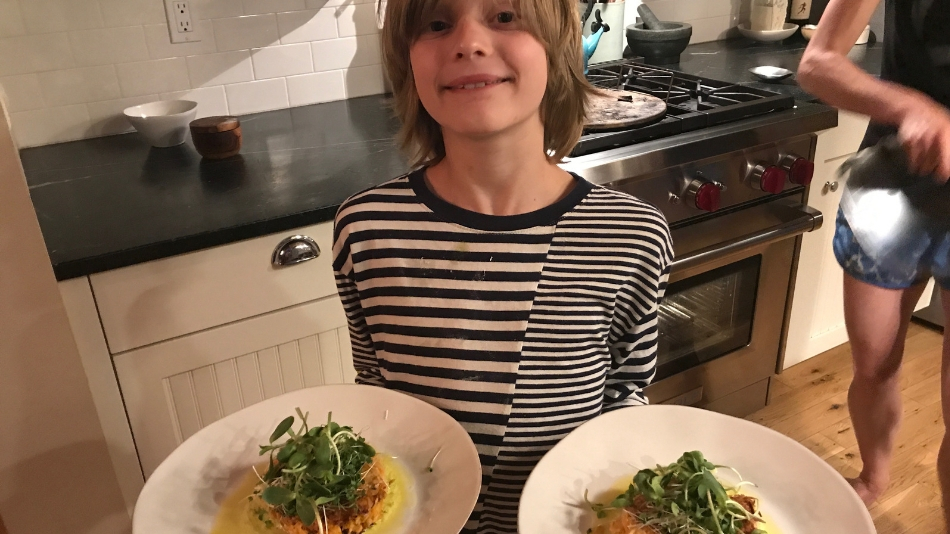
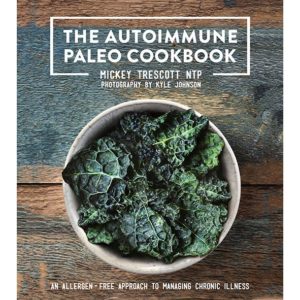
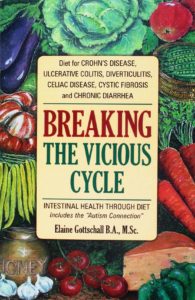

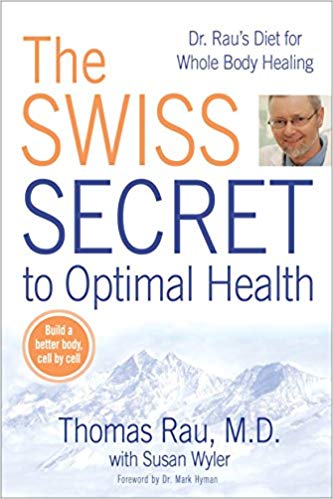
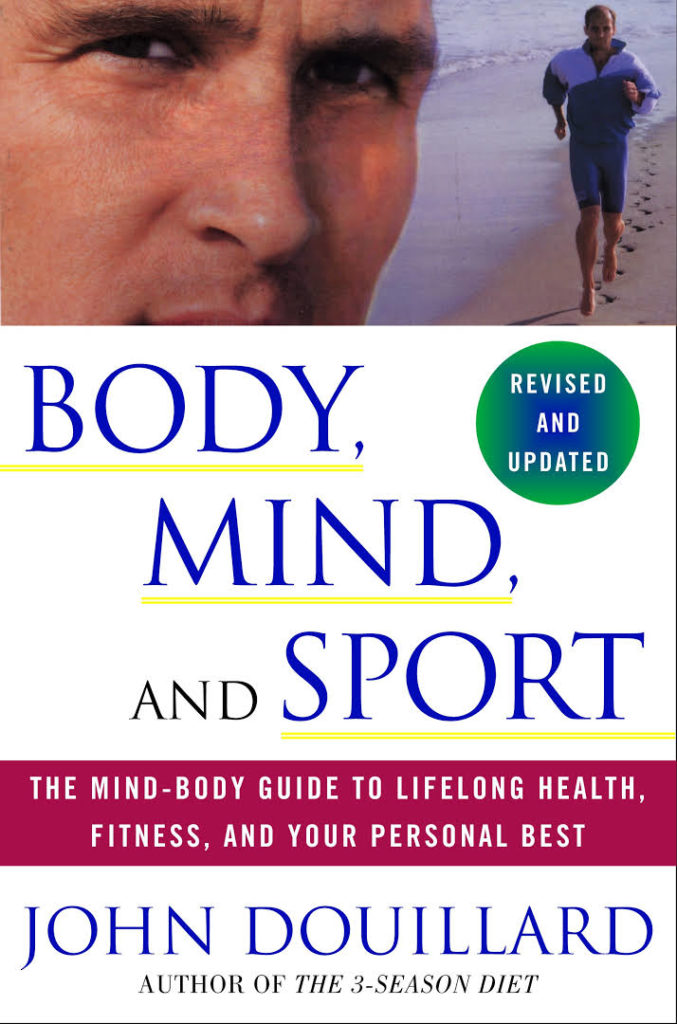
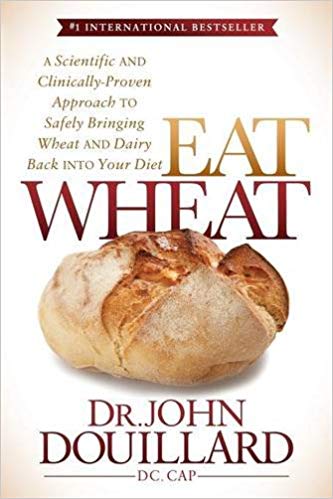
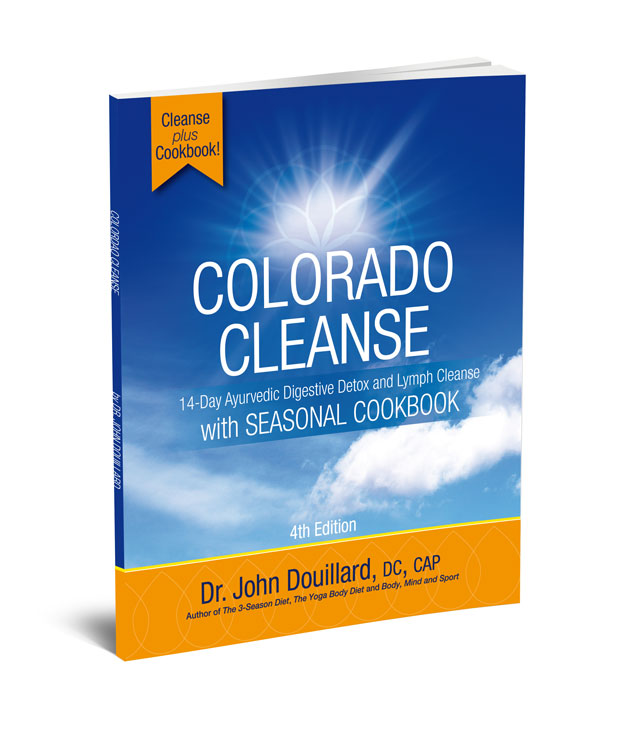
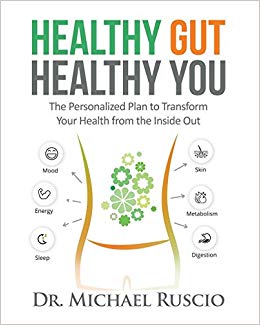
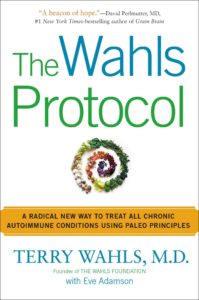
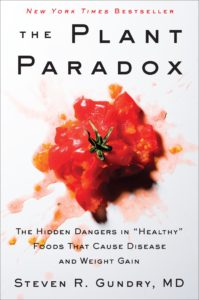
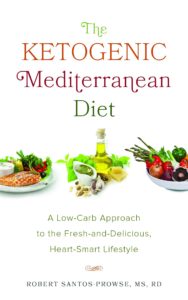
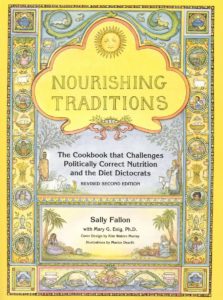
Most of these diets are far too time consuming and costly – having been on gaps for a year and scd for an extended period of time and plant paradox I abandoned all due to the complexity of the meal prep and running a calorie deficit most days, although carbs & sugars mess with me quite significantly, I’m a happier and more balanced human being for not pursuing these diets to the letter anymore. Looking more into liver detoxing now opposed to gut as they’re inextricably linked & reached a dead end trying to improve ‘gut health’ It took me a long time to get over the trauma of my weekly meal prep on gaps. I do avoid processed and store bought meat, eggs & fish in favour of grass fed / wild etc which helps me a lot – so some lessons from these diets have stuck.
Ben…if you have time… kindly do a research about a diet of Tamilnadu in India….. this is the best blue zone for longevity….. nobody is telling the truth about this
Thanks for the great podcast and show notes!
Which of these diets would you recommend for someone who doesn’t eat much meat? I’ve recently figured out that I have a really hard time digesting it. One serving and I have discomfort for days.
Have you considered taking a digestive protein supplement or taking Betaine HCL?
Wondering if you take any stock in the “Eat Right For Your Blood Type” Diet by Dr. Peter J. D’Adamo
Thanks!
HI Ben,
Great article. I’m curious if you have any experience with the Superman Diet.
Thanks,
Brian
Hello Ben,
I have liked and subscribed to your podcast as requested. I hope it helps.
Can you PLEASE help me understand something?
Do you operate most of the time on ketones or are you out of ketosis most of the time?
I have read and listened to many of your podcasts and cannot really find the answer to that.
The one thing that I am wondering is this:
If you eat 100g to 150g of carbs per day, then you will likely not be in ketosis.
If that is the case, is 100g to 150g of carbs enough for average athletes (by that I mean, the average guy who prioritizes his health by working out and playing lots of sports for fun) to perform optimally?
I read somewhere that someone who consumes that amount of carb is not in ketosis and runs on empty (in the area of glycogen) most of the time therefor severely limiting his athletic performance.
Please help. I am very confused about all that and want to do what is best.
Thank you.
Marcus
Pretty please? Can you please let me know when you have a moment?
Thank you!
Happy New Year!
I'm in a state of mild ketosis most of the time. I do this by practicing intermittent fasting, where I'll typically go from 8pm the previous night to 11-12 the next day without eating. I usually do a "carb refeed" in the evening, which I recommend for athletes. This is a good way to get the carbs, minimize the blood sugar spikes, and allow your body to start shifting back to ketosis as you sleep/wake up w/o eating the next day.
Thank you so much Ben.
Happy new year to you and your family.
Marcus
Hi Ben,
Thanks for the article. I’m dealing with SIBO and h. Pylori and going to try the elemental diet. My MD recommends antibiotics but I’m still hesitant. My question is: while doing the elemental diet, would you incorporate probiotics at the same time or wait? I read Healthy Gut Healthy You per your recommendation and see he recommends it, but I wanted your opinion especially since you had previously written about certain probiotics having the ability to worsen SIBO. I ordered Seed probiotics but it contains strains that might be a poor choice (as opposed to soil-based) for SIBO. I don’t know who to believe anymore other than you and a few others, so I’d love your advice. Anyhow, thanks again! Love the Kion products and looking forward to new ones down the road.
Yes, and I cater it based on the individual for whom I am creating the diet. Almost always, extra virgin olive oil and Kion Aminos are included, along with a few other choice botanicals. You're welcome to schedule a consult if you'd like to take a deeper dive: https://bengreenfieldfitness.com/coaching/
What do you think about Jack Kruse’s Epi Paleo DIet?
I like the diet, but I feel it is too restrictive once the mitochondria are healed. Here's my episode of the show with Jack: https://bengreenfieldfitness.com/podcast/biohacki…
In one of your previous podcasts, you mentioned the Weston A Price diet for mass gain or bulking. After doing some research, I’m still unable to find guidelines on what your macros should look like. Coming from a keto diet, I’m specifically concerned about overdoing it with the carbs. Any advice?
Did you just say metformin and rapamycin?
Really appreciate the article, Ben, as well as the podcasts and other works (currently reading Beyond Training).
Sort of new into the nutrition/biohacking world — as a former college athlete who’s always looked healthy from the exterior, I started experiencing a lot of pain and inflammation in my early 30’s from pushing it a bit too much in the gym, which got me thinking that maybe I’m not so healthy on the inside. That led into a recent dive into nutrition, and consequently, biohacking. But I look at some of your suggested supplements, especially in the Advanced List, and it’s hard to get a good beat on what a lot of those supplements do, the interactions between them, the frequency and appropriateness for the individual, etc. For example, I just read The Perfect Health Diet (which I loved), and they make some vitamin/mineral recommendations — but these are clearly over and above the recommendations made there.
Is there any consolidated reading that might give me further insight into some of the recommendations you made?
Appreciate the help.
It's really dependent upon goals and individual needs. This is a good place to start: https://bengreenfieldfitness.com/supplement-guide
Awesome, thank you!
Hi Ben! I see you briefly mentioned Cyrex to identify allergens, but I’m curious why you didn’t discuss things like Viome or Youtrients to help identify a customized diet. Are these not objective methods for determining the foods that are best for your body?
Like I said at the beginning of the episode, testing wasn't the focus of this episode. I have plenty of content about that. Search "Viome" on my website. You'll find what you are looking for. Yes, testing with Viome or something like Youtrients is good for determining a custom diet.
Great article as always Ben. Really appreciate the time you put in. This is such a hard topic for people. Lots of good options. Adherence being a major player in them all. Thanks!
What ever happened to the Perfect Health Diet?
To me that diet is almost like a really clean, slightly Asian version of the Weston a Price diet
Really great article! I really enjoyed it, thanks so much for the hard work of putting out great resources!
Thank you, Ben. I predict a lot of people are going to bookmark/share this article. It’s a wonderful resource.Thank you,
My diet is in good shape because I was in such bad shape. Lyme and autoimmune disease nearly brought me down, plus I have a son with autism spectrum disorder. I already have all but one of the books you recommend. I have found benefit in these books during points in my health journey.
Word of advice to those with Lyme on antibiotics and AIP diet. Watch your gut flora. Don’t stay on initial, very limiting, phase of AIP for too long, which I likely did. I think you need more/certain type of fermentable carbs in gut while on Lyme antibiotics. I ended up with severe histamine intolerance while I did AIP and Lyme treatment at same time, Still persists, though it has improved.
Not blaming AIP, just mentioning it.
Thank you again, Ben. You have made a difference in my life.
Where can we find the “Nootropics: Micro-doses of psilocybin blended with Lion’s Mane and niacin (a mind-bending, productivity-enhancing, brain-spinning stack made popular by mushroom expert and mycology researcher Paul Stamets)” Or could we get a recipe?
Thanks Ben
In new discoveries: https://bengreenfieldfitness.com/article/weekly-r…